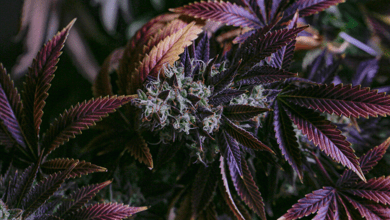
Are Hybrid Strains Taking Over Indica and Sativa Strains?
Published on 3/10/21
If youve ever stepped into a dispensary to shop or even looked at a modern bag of weed, youve likely seen a label indicating that the cannabis was either an indica, sativa or hybrid. The marijuana terms have become so common that they have, for many people, come to represent specific psychoactive effects instead of plant varietals.
What does it mean for a strain to follow into the categories of sativa vs. indica? What about the best hybrid strains? In this article, well dive into the classification of cannabis genetics, looking at the differences in how the plants grow, why there are so many hybrid weed strains on the market, how the overarching terminology is already being phased out in some corners of the industry and what the future has in store for the wide and ever-expanding world of cannabis strains.
Different Strains of Weed: Indica vs. Sativa
 Unsplash
UnsplashWhen you talk to a dispensary budtender about your options for cannabis strains, the first question they typically ask is whether you are looking for an indica or sativa. According to common thought, indica strains target the body with a heavy, lethargic, sleepy high, while sativa strains are sold as a mid-day pick-up that targets the head and can boost energy.
Scientifically, it is a little more complicated. Originally, indica and sativa strains grew on opposite sides of the globe, with wide-leaved indicas native to the Middle-East and Asia and thin-leaved sativas originating in Central and South America. Over the past five decades though, as American and European cannabis enthusiasts traveled the globe looking for the most potent and flavorful strains they could find, an obsession with plant breeding evolved, leading to thousands upon thousands of unique cross-breeds that have come to dominate the market.
As cannabis research deepened, scientists eventually discovered that the landrace or original, sativa and indica strains were made up of unique terpene profiles that mixed with THC and other cannabinoids to influence the different alert or sleepy effects. These days, many growers, dispensaries and cannabis enthusiasts are doing away with the indica and sativa labels, and instead predict psychoactive effects based on the presence and concentration of specific terpenes like myrcene, limonene, caryophyllene and more.
What Is Hybrid Weed?
 Unsplash
UnsplashIn the broadest sense, hybrid cannabis strains refer to any and every variety of cannabis that was created by breeding two other marijuana strains. What does a hybrid plant look like? Because there are so many hybrids on the market, it depends. Some hybrid varieties have more sativa genetics and grow with thinner leaves and spindlier buds, while others are more indica-dominant that grow with thicker leaves and bulbous flowers.
Like any plant breeding, the creation of cannabis hybrids begins with the pollen of a male plant spread to a living female plant. To find the most potent, flavorful and beautiful buds possible, cannabis breeders spend years meticulously dusting specific pollen to their plants, crafting closed environments to control as many factors of the process as possible. By selecting and breeding for specific vigorous genetics, marijuana breeders have been able to rapidly increase the quality of cannabis across every sector of the industry.
Is Hybrid Weed Considered the Best Cannabis Strains?
In most dispensaries, it is near impossible to find true landrace strains that have not been cross-bred with other varieties. To that point, the vast majority of the high-THC, exotic flavors that are at the top of every enthusiasts list of strains are hybrids. So are the best strains always hybrids? Not necessarily, but in most cases, this long-term, repeated hybridization process produces some of the highest THC and terpene quantities.
Hybrid strains are often bred to produce higher yields, making them more appealing to growers with limited space and large orders. The hybrid breeding process also focuses on specific terpenes and flavor profiles, feeding the insatiable market demand for new, unique strains that taste like candy, confections and oil leaks.
The Future of Cannabis Strains
 Unsplash
UnsplashAs the legal weed industry continues to grow, new hybrid strains are hitting the market what seems like every week. Dispensaries and consumers alike clamor over brand new flavor profiles, potencies and packaging; and the race to create the newest and hottest hybrid will be an arms race between cannabis breeders every year.
Outside of genetic hybrids, a new generation of outdoor cannabis growers are focusing on specific locations, or cannabis appellations, to differentiate their bud. Similar to wine, which relies on hyper-specific terroirs to track the way that local soil, air and water affect the taste and chemical make-up of each bottle. Using cannabis appellations, eighths of California cannabis would be labeled by where they come from, with a Humbodlt County hybrid marked differently than a similar strain from Sonoma County.
It is not yet clear if cannabis appellations will become the next major classification factor in the cannabis industry, and with so much of the marijuana on the market produced indoors, the location-specificities will not encompass all of the industry. As the indica vs. sativa dichotomy gives way to menus dominated by genetic hybrids, the presence of specific terpenes is the best tool we have to predict the psychoactive and mood-altering effects of any given strain.
Do you have a favorite hybrid strain? Let us know what youre smoking in the comments below!


















